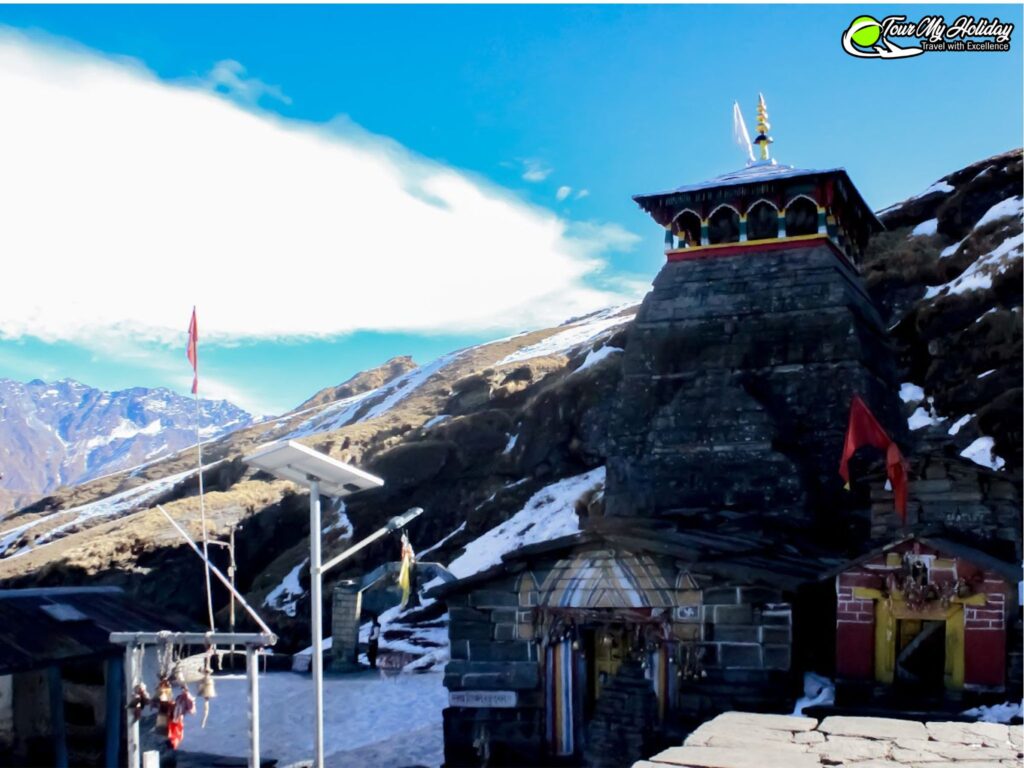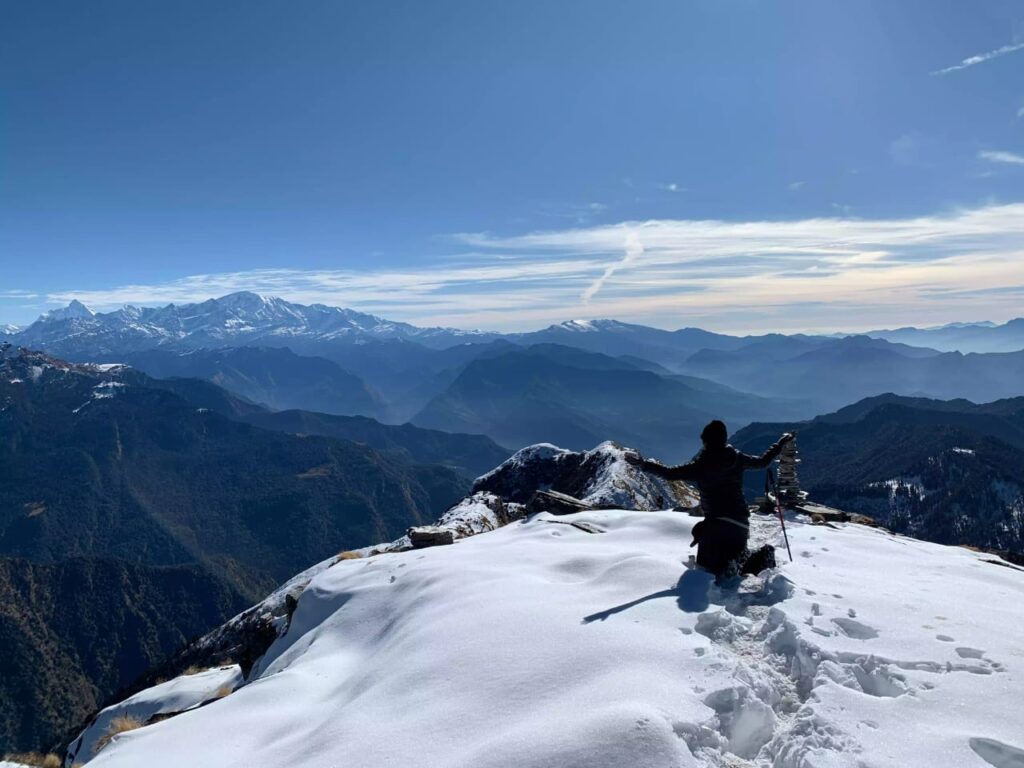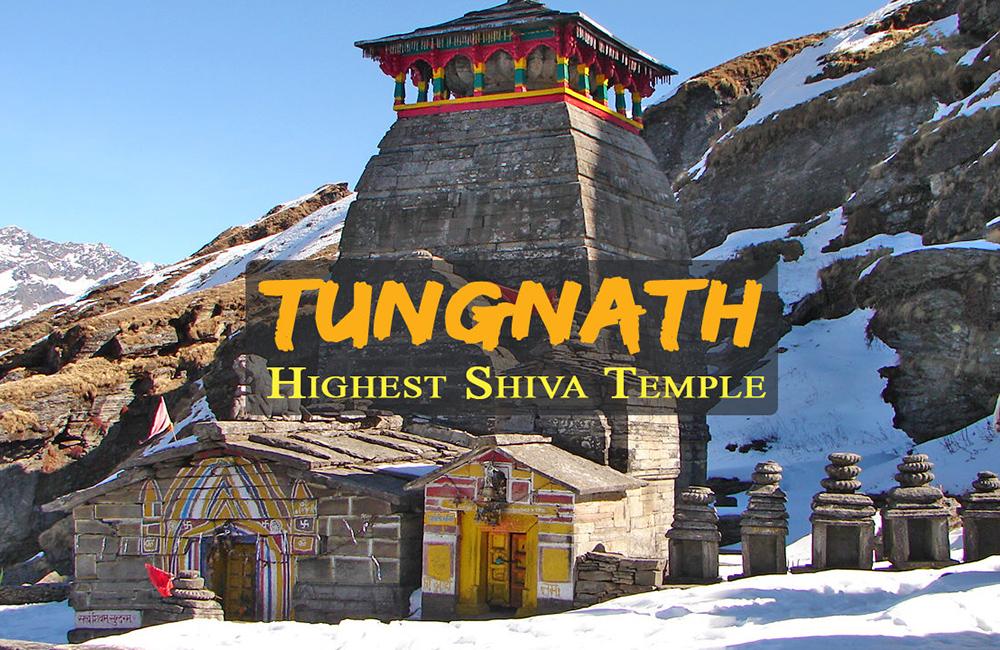Chopta Tungnath Trek
Published on November 05, 2024
Tungnath Temple Trek – The Complete Guide
(World’s Highest Shiva Temple | Panch Kedar | Mini Kedarnath)
Overview – Why Tungnath is Special
- Altitude: 3,680 m (12,073 ft) – Highest Shiva temple on Earth
- Part of: Panch Kedar (5 Shiva temples of Garhwal)
- Mythological importance: Lord Shiva’s arms (Bahu) appeared here
- Trek distance: 4 km one way from Chopta (easy–moderate)
- Total time: 2–3 hrs up, 1.5–2 hrs down
- Best season: Apr–Nov (summer green, winters full snow)
- status: Ropeway Phase-1 operational (Chopta → 500 m below temple)
Tungnath is the only Panch Kedar temple that is a short, scenic day trek. You get the full Kedarnath vibe without the 16–18 km of hard climbing.

History & Mythology – The Full Story
1. The Great Legend – Shiva’s Disappearing Bull (Mahabharata Era)
After the Kurukshetra war, the Pandavas wanted to seek forgiveness from Shiva for killing their own kin. Shiva did not want to meet them, so he turned himself into a bull (Nandi) and vanished into the ground at Guptakashi.
- Hump → Kedarnath
- Arms (Bahu) → Tungnath
- Face → Rudranath
- Navel → Madmaheshwar
- Hair → Kalpeshwar
The Pandavas built five temples at these spots → Panch Kedar. Tungnath is the third Kedar in the traditional pilgrimage order.
2. The 1,400-Year-Old Temple
- Built in ~8th century CE by Katyuri kings in the North-Indian Nagara style
- Made of black stone, only 5–6 ft high (typical of ancient Himalayan temples)
- Tilting slightly because of the 2013 floods, but still standing strong
- The sanctum has a swayambhu (self-manifested) Shiva lingam shaped like raised arms
3. The Winter Miracle – Gods Walk to Makkumath
Every winter (Nov–Apr), when Tungnath closes due to snow, the deities are carried 22 km down on palanquins to Makkumath village (Ukhimath). The priests continue daily puja there for 6 months. When the temple reopens in May, the gods “walk back” uphill — a 700-year-old tradition still alive.
4. Ravana’s Penance Connection
Some priests say Ravana meditated here before going to Kailash. A small cave 200 m above the temple is called “Ravana Shila”.
2025 Trek Details & Itinerary
| Day | Route | Distance | Time | Altitude Gain | Stay |
|---|---|---|---|---|---|
| 0 | Haridwar/Rishikesh → Chopta | 210 km | 8–9 hrs | — | Chopta camps/hotels |
| 1 | Chopta → Tungnath → Chandrashila → Chopta | 4 km + 1.5 km + back | 6–8 hrs total | +800 m | Chopta |
| 2 | Buffer/return | — | — | — | — |

Optional 2-Day Stay: Day 1: Chopta → Tungnath (night in temple dharamshala or camps)
Day 2: Tungnath → Chandrashila sunrise → back to Chopta
Ropeway Update 2025
- Phase-1 ropeway from Duggalbitta (2 km before Chopta) → 500 m below Tungnath
- Cost: ₹650 round trip
- Time saved: 2 hrs uphill
- From ropeway top → still 1.5–2 km walk + 300 steps to temple
Detailed Day Trek from Chopta (Classic Route)
| Section | Distance | Time | Trail Description |
|---|---|---|---|
| Chopta → Temple Gate | 1 km | 20 min | Jeep road, shops, parking |
| Gate → Mid-point (Maggi point) | 1.5 km | 45 min–1 hr | Concrete steps, rhododendron forest |
| Mid-point → Tungnath Temple | 1.5 km | 1–1.5 hrs | Steeper stone steps, open ridge, breathtaking views |
| Temple → Chandrashila Peak | 1.5 km | 45 min–1 hr | Rocky, steep, 360° summit, Nanda Devi visible |
Total round trip: 8–10 km,000 steps, 9 km, 5–7 hrs with breaks.
Nearby Attractions (All within 1–2 days)
| Place | Distance from Chopta | Time Required | Highlights |
|---|---|---|---|
| Chandrashila Summit | 1.5 km above Tungnath | 2 hrs round-trip | 360° view – Nanda Devi, Trishul, Chaukhamba |
| Deoria Tal | 28 km | 1 day | Mirror Lake, Chaukhamba reflection |
| Ukhimath (Winter seat) | 30 km | Half day | Omkareshwar Temple, Pandav dance in winter |
| Kartik Swami Temple | 35 km | 3 km trek | Stunning sunrise, less crowded |
| Madmaheshwar (4th Kedar) | 50 km + 18 km trek | 3–4 days | Beautiful valley, second toughest Panch Kedar |
Practical Information
| Item | Details |
|---|---|
| Opening dates | 26–28 April 2025 (exact date announced on Akshaya Tritiya) – 3 Nov 2025 |
| Darshan timing | 6 AM – 7 PM (aarti 6:30 AM & 6:30 PM) |
| Stay at Tungnath | 3 dharamshalas (₹400–800 bed), 5–6 private camps (₹1500–3000 with meals) |
| Chopta stay | 50+ camps & hotels (₹1500–6000) |
| Food | 10+ Maggi points on trail, full meals at temple & Chopta |
| Mobile network | Jio & Airtel 4G till the temple, summit has a strong signal |
| ATM | Nearest in Ukhimath (30 km) |
| Medical | Basic clinic in Chopta, oxygen cylinder available |
FAQ – Tungnath & Chandrashila Trek
Q1. How difficult is the Tungnath trek? A: Easy–Moderate. Well-paved stone path almost to the temple. Anyone with average fitness can do it.
Q2. Can we do Tungnath and Chandrashila in one day? A: Yes! 95% people do it as a day trek from Chopta. Start 5 AM → back by 2–3 PM.
Q3. Is the ropeway fully ready in 2025? A: Phase-1 yes (up to 500 m below temple). Phase 2 (direct to temple) is expected in 2026.
Q4. Can senior citizens do it? A: Till Tungnath temple: Yes (many 70+ do it slowly). Till Chandrashila: Only if very fit. Ponies available till 300 m below the temple (₹1500–2000).
Q5. How much snow in winter? A: Dec–Mar: 2–6 feet of snow. Microspikes compulsory. The temple is closed, but locals have opened a small path for devotees.
Q6. Is night stay allowed at Tungnath? A: Yes! 3 dharamshalas + private camps. Temperature drops to –5 to –15°C in winter.
Q7. Which is better, sunrise – Chandrashila or Deoria Tal? A: Chandrashila wins for 360° Himalayan view. Deoria Tal wins for perfect reflection.
Q8. Cost of full trip from Delhi (2N/3D)? A: ₹6,000–9,000 per person (cab + stay + food).
Q9. Can we visit during the monsoon? A: Possible till mid-July. After that, heavy rain & landslides close the road frequently.
Q10. Final question – Tungnath vs Kedarnath: which one? A:
- Want peace, short trek, better views → Tungnath + Chandrashila
- Want the original energy & crowd → Kedarnath
Most people who have done both say, “Kedarnath shakes you. Tungnath heals you.”
Stand at the temple door at 6 AM, watch the first ray hit the golden trishul while snowflakes dance around ancient stones, and you’ll understand why even Shiva chose to leave his arms here.
Jai Tungnath Mahadev! Har Har Mahadev!
